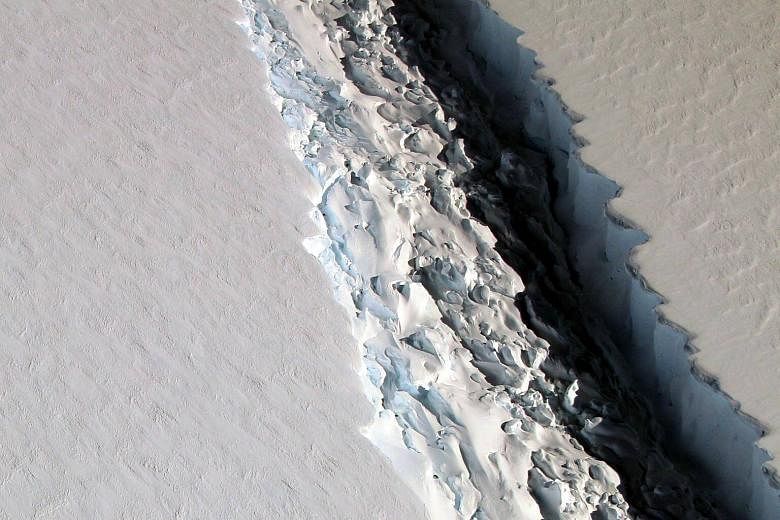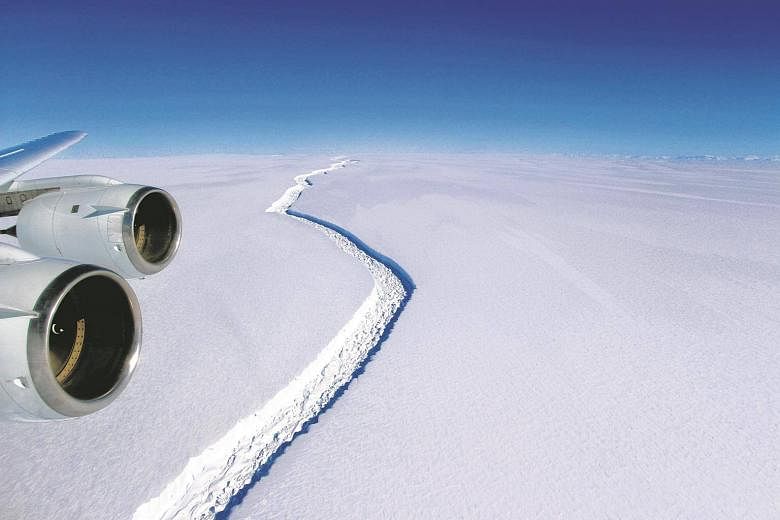WASHINGTON • Last week, British scientists announced a disturbing finding - a crack in the Larsen C ice shelf in the Antarctic Peninsula had dramatically accelerated its spread, increasing 18km in length in the space of a month.
This means the floating ice shelf, which is nearly as big as Scotland and the fourth-largest of its kind in Antarctica, is poised to break off a piece about 5,000 sq km in size, or over 10 per cent of its total area. An ice island the size of a small US state would then be afloat in the Southern Ocean.
There is now uncertainty about what would happen next. On the one hand, the researchers from Project Midas, who announced the growth of the rift, have published research suggesting that it "presents a considerable risk to the stability of the Larsen C ice shelf".
If they are right, it is hard to understate how big a deal it is - Antarctica has lost ice shelves before, but not one so enormous. Not only would a loss of Larsen C change the map of the earth, but also the shelf holds back glaciers capable of contributing about 10cm of global sea level rise over time.
However, other analyses have suggested that most of the ice that would be lost does not play a key role in holding the glaciers behind the shelf in place. And some scientists have expressed scepticism about whether there is "cause for alarm". Time, ultimately, will show who is right. But in the meantime, we can sketch the kinds of things that scientists are thinking about.
First, they are mindful that what is happening to Larsen C could be part of a broader pattern for ice shelves both globally and on the Antarctic Peninsula, including Larsen A, which collapsed in 1995, and most of Larsen B.

Much of Larsen B, located just north of Larsen C, collapsed dramatically in 2002. Scientists say this is probably not something that has happened in more than 100,000 years. What is more, the collapse followed a large break in 1995, a possible analogue for what is now happening to its southern cousin.
Larsen C has also apparently been in place for a very long time. And whether or not the pending loss of its enormous iceberg would ignite a fast retreat, researchers agree the event will bring it down to a size smaller than anything humans have observed before.
WASHINGTON POST


